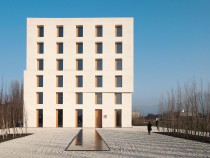The question “How much is enough?” has become a hotly discussed topic in architecture of late – at least in parts of Central Europe. In ecological theory, sufficiency – i.e. moderate consumption – is regarded as the third component of effective sustainability strategies. The first two of these are efficiency (which aims to achieve more with less resources) and consistency (which strives towards closed cycles of materials and the use of renewable energy). In practice, the ‘insufficiencies’ in the way we erect and use buildings and city districts are strikingly obvious. For example, the heating demand of Germany’s residential building stock has steadily decreased by around 1.8% per year since 2005. Most of these efficiency gains, however, have simply been consumed by the continual increase in the amount of living space per capita.
Another known dilemma relates to the heating behaviour of building occupants. Whereas most energy-requirement calculations continue to be based on a room temperature of 20?°C, most people heat their homes to a temperature of 22 °C to 23 °C. As a consequence, if an average old building is insulated, the real energy saving is frequently 20-30% lower than the saving previously calculated. (Jakob Schoof)
Another known dilemma relates to the heating behaviour of building occupants. Whereas most energy-requirement calculations continue to be based on a room temperature of 20?°C, most people heat their homes to a temperature of 22 °C to 23 °C. As a consequence, if an average old building is insulated, the real energy saving is frequently 20-30% lower than the saving previously calculated. (Jakob Schoof)






